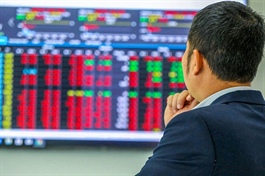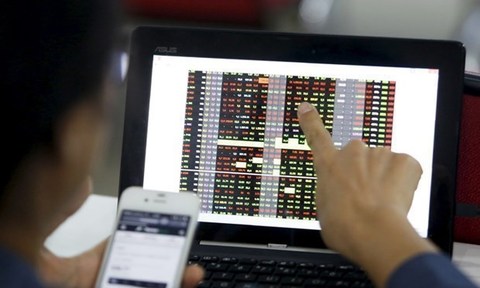Securities firms race in margin lending
Securities firms race in margin lending
The growth of the stock market since mid-2020, especially in 2021, has boosted investors' demand for margin lending.

To meet the market demand, securities firms have continuously raised capital, extending room for margin lending. This not only helps securities companies keep and attract investors, but also increases revenue and profit for the business. However, margin lending will cause great risks for investors when the market goes down.
Revenue from margin lending rises
In fact, margin lending contributes a significant part to the outstanding business results of securities firms.
For example, in its third quarter results, KB Securities Viet Nam JSC (KBSV) reported a gain of 40.7 per cent on-year in operating revenue to VND226.3 billion (US$9.8 million). Of which, margin lending and brokerage segments contributed the largest part and were also the two fastest growing segments.
Specifically, interest from loans and receivables of KBSV increased by 68.6 per cent to VND92.3 billion, while brokerage revenue rose over 190 per cent to nearly VND96 billion.
Similarly, Ho Chi Minh City Securities Corporation (HCM) reported a rise of 112.7 per cent year-on-year to VND1.09 trillion in operating revenue in the third quarter. Of which, its interest from loans and receivables climbed 130 per cent over last year to VND315.1 billion and brokerage revenue surged 148.1 per cent to VND369.6 billion.
For the first nine months of the year, the securities firm’s profit after tax edged up 124 per cent to VND318.4 billion.
Notably, revenue from margin lending activities reached VND808.2 billion, up 125.3 per cent over the same period last year and accounting for 34 per cent of its total revenue.
Meanwhile, at the end of the third quarter of 2021, Vietcombank Securities company (VCBS)’s margin debit balance reached nearly VND3.4 trillion, more than two times higher than at the beginning of 2021.
Although this segment's revenue does not contribute much in the structure of the firm’s total revenue, it is the segment with the strongest growth rate. In the third quarter of 2021, VCBS earned nearly VND70.8 billion in interest from loans and receivables, more than three times higher than the same period last year.
Currently, SSI Securities Corporation (SSI) leads the market in margin lending, with outstanding loans at the end of the third quarter reaching a record of VND18.1 trillion. Revenue from lending and receivables segment was VND431.6 billion, up 267.9 per cent compared to the third quarter of 2020.
Racing to keep customers
The attraction of margin lending rises when the market is active and demand for leverage in investment increases. Therefore, many securities companies have moved to reduce lending interest and transaction fees to compete and attract customers.
Analysts say that the trend of lowering margin lending rates is inevitable and securities companies that do not lower interest rates will face the risk of losing customers.
According to SSI, at the end of September, the securities company completed the disbursement of the largest foreign unsecured loan in the securities industry, worth $118 million.
Yuanta Securities Viet Nam (YSVN) also officially raised the margin lending limit from November 25, after increasing its charter capital to VND2 trillion.
The increase in capital helps YSVN extend margin lending, and then investors can access preferential loans and increase their chances of owning good stocks as the stock market is developing strongly.
According to YSVN, along with the positive movements of the market, the demand for margin loans also increased as many investors wanted to seize the opportunity.
However, margin lending is like a double-edged sword because when the market rises, it will be a catalyst to help increase benefits for both securities companies and investors, but when the market goes down, it will cause great risks for securities companies, investors and the general market.
Therefore, analysts warn securities firms and investors need to be careful in margin lending and borrowing to avoid risks and contribute to the sustainable development of the market.

























